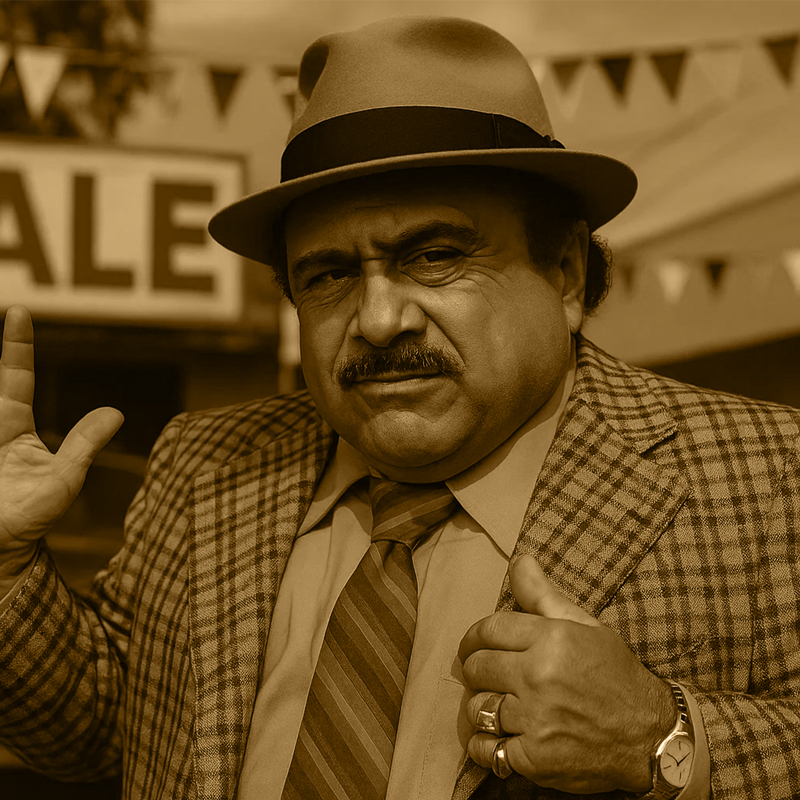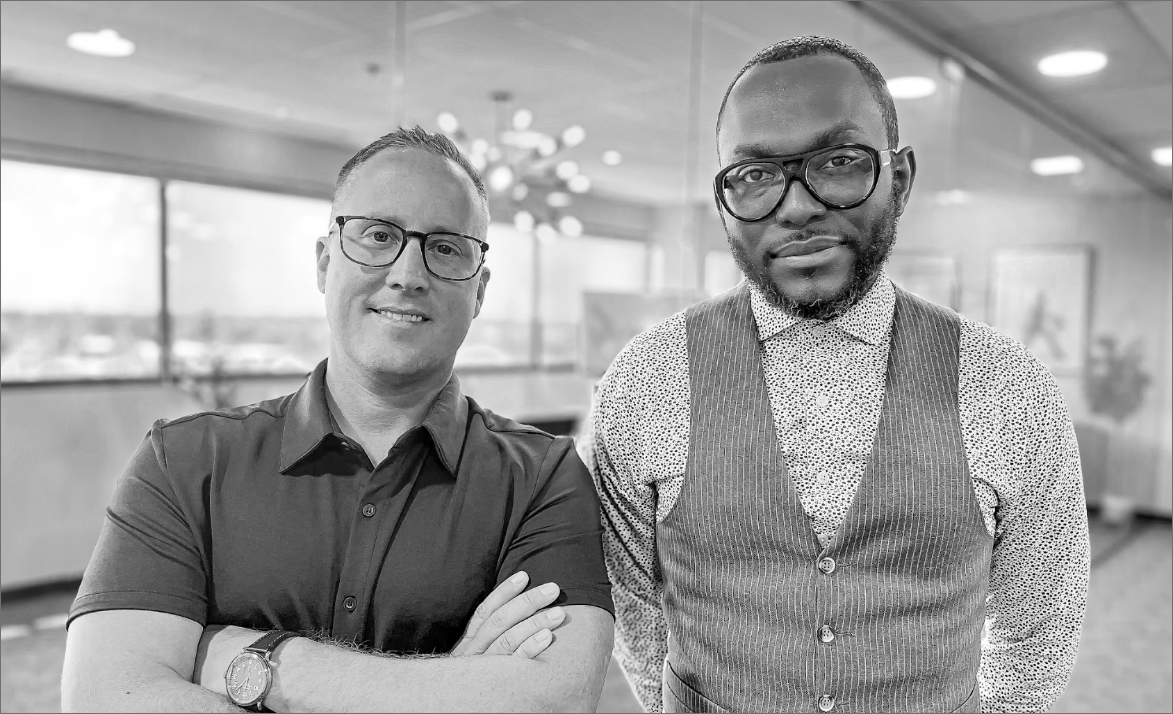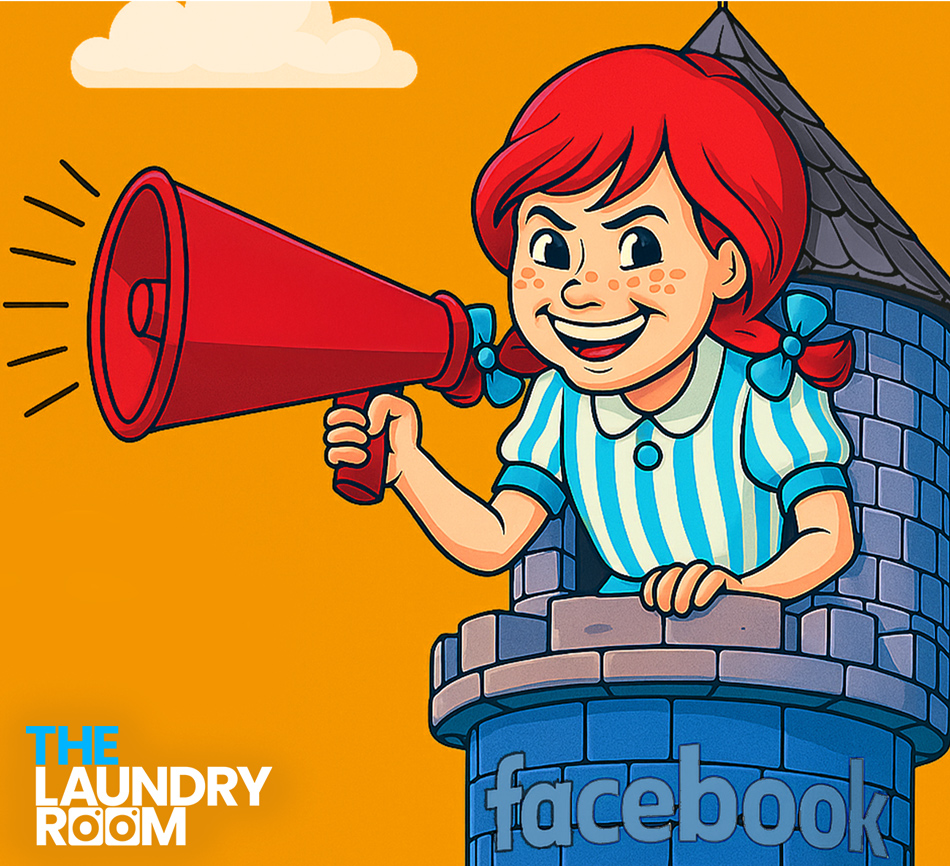00:09 – 00:38
The Laundry Room. I’m Nick Skislak.
Michael Taylor, sitting here.
Today, let’s talk about budgets, cool?
Budgets.
Client budgets. What do you do? What happens when a client comes to you, and maybe this will be good insight too, for clients or people that are thinking about hiring an agency, we can kind of give them the inside scoop of what we do when clients don’t give a budget.
00:39 – 00:57
And I think sometimes this works and sometimes it doesn’t work. But let’s talk about that a little bit. What do you do when a client comes in, and they want these things, and you say, okay, what’s your budget?
And they go, well, I don’t know. I want to just give me pricing, and we got to look. I have no idea what this stuff is going to cost.
00:57 – 01:36
What do we do? What should be done? How do we look at that?
I think in business, it is very parallel to our personal lives. When you walk on to a car lot, you have an idea of what you’re comfortable spending, what you can realistically spend, and then…
What’s out of bounds.
What’s out of bounds, right? So when you walk on to a Ferrari car lot, you wouldn’t do so without knowing the floor pricing.
01:37 – 02:10
You’re going to have some sense, some idea of, here’s what I’m ready to drop.
Versus if you walk on to the GM lot, the Buick lot or the Chevy lot, right? You know that window. Clients are guilty of not doing the honest work of saying, here is the ballpark of what we are either comfortable or willing to invest in X.
02:10 – 02:34
So there’s like two ways that business would come in, and I think there’s one of owner or operator or marketing guy comes in and says, hey, we’re looking at a couple agencies. We want to get some pricing together. These are the things that we’re looking to do.
Can you give me a quote? And then the other side are these more formal kind of RFPs that go out where like some of the things, you’re not allowed to know the budget, right?
02:34 – 02:53
Like they probably have one, but they’re not going to give it to you.
These are two totally different scenarios. I think for us, like for the most part, we’ve kind of stayed away from those RFPs. If RFPs didn’t have a price in them, we’d say, no, thank you, just for that reason.
Is this a Ferrari that you’re looking for or a Chevrolet?
02:53 – 03:13
We have no clue. On the flip, talking about that owner operator, when they come in and do it, it’s kind of like a flex move, I feel like, that doesn’t really work.
It gets an eye roll from us nine times out of ten. Like, all right, this guy wants to double his biz, and he wants to grow, and he’s coming to us,
03:13 – 03:34
and he doesn’t have a budget. Like, he doesn’t have a budget.
He’s got a budget.
Yes, absolutely.
He definitely has a budget.
And he’ll say, give me your best price.
Yeah.
What’s your best price? Well, I think the challenge and the reason it is an eye-roll moment, this is a business that’s coming to us. They don’t run their business that way.
03:34 – 04:02
Yeah, right.
Right? You don’t go to a restaurant and say, I want the value meal, and then the restaurant says, well, that’s going to cost you a couple bucks more than I just charged the last guy, because I just feel like charging you more. Versus customers saying, give me your best price for this value meal.
04:02 – 04:25
What’s your best price? You can do that cheaper than $4.99. No, man, the price is the price.
What do you care about? What do you want to have? Here’s the price.
Our rule of thumb, which I think has worked really well for us, when a client comes to us, you can either have a budget or a scope.
04:25 – 04:44
You can’t have both, right? You can come and say, here’s what I want or here’s what I need.
Tell me what it’s going to take to do that. Or here’s what I have to invest. Tell me what I can do for that to get me closer to the goal that I’m looking for.
I think that’s what’s done us really well on those calls, too,
04:44 – 05:01
like early on of when we do get scope, which is probably most common. I think that’s more common to come with a scope rather than, hey, I got this bag of money, help me spend it. That’s not a good position to be in, I suppose, as a client going to an agency and saying, I got this bag, how should we spend it?
05:01 – 05:22
Though sometimes it does happen. On the scope side, though, when we can get that, a good understanding of what the scope, what they’re looking for, I think we’ve done quite well at coming out with that right away. Hey, what you’re talking about sounds like $80,000.
Where do you think about that? Where does that sit with you?
05:22 – 05:47
And it’s either a whoa or a yeah, okay, I thought it’d be around there.
All right, let’s keep going. I love doing that at the beginning of engagements or conversations just to like get it out of the way. Because without knowing what the scope and for first timers that haven’t done this kind of stuff before, haven’t worked with agencies in this kind of capacity, different types,
05:47 – 06:09
I think that’s the thing that we struggle with a lot or that businesses today, it’d be hard to run a biz today, looking for an agency with all the different agency types.
We were, I told you yesterday, we were talking to an e-com retailer, like an Amazon guy, he sells sugar-free candy. And our old accountant sent him to me,
06:09 – 06:30
he’s over in Grand Rapids, hey, talk to my friend, Nick, he’ll at least give you the outside perspective thing of this. And he, this guy called and he was not scared, but hey, I got an meeting with my agency this afternoon.
These guys keep telling me to spend more money. Tell me what it is. Like, I used to spend, five years ago,
06:30 – 06:50
I’d only have to give up 30% of margin.
Now I’m closer to 40% of margin. Is this what’s happening? And I had to tell him, yeah, I think it is.
I don’t think the, you know, I gave him my honest two cents on it, that I don’t really think your agency’s trying to pick your pocket. I think they’re being honest with you of like, what it’s going to take for you to continue to scale this thing.
06:50 – 07:15
So not having that, not having the either relationship with your agency or the framework to know what you’re going and asking for, getting that price thing out of the way early is really, really helpful.
Heard this amazing quote, perspective on a show that I follow and it’s I think very applicable for clients.
07:15 – 07:53
The confidence that they lack in knowing what they should spend or invest is due to low competence. They don’t have the confidence to share budget with agency because they don’t always have the competence in what it is that needs to happen with that investment.
And so the good news for agencies or firms is you can help the client in that endeavor because you start probing and asking questions about what is it you’re looking to get.
07:53 – 08:26
You know, this is my favorite.
What is success?
What is success? My favorite jab to give to would-be clients is anytime someone comes to us and says, I need some of that SEO thingy. You guys do that SEO stuff?
I need some of that. It’s a tell because really what they’re asking for is, I know I need to do something to get more squeeze out of my digital property, my web property or my activity on the web.
08:26 – 08:52
Help me do that.
That’s what they’re really asking for. And they’re pulling on jargon or vocabulary words they’ve heard, rather than having the confidence to really understand the goal or success they’re looking for.
What’s the outcome you’re looking for?
What is the outcome you’re looking for?
And what are you willing to invest to get that? I think that’s the, we did this work.
08:52 – 09:18
So I’m pulling up a slide here.
According to the US Small Business Administration, they recommend that companies spend seven, and this is small business, so not big, but seven to eight percent of gross rev.
09:18 – 09:50
Back into marketing.
Into marketing.
Yeah.
Now, and this isn’t for growth either. This is just a, hey, you own a biz, how much of your rev should you be putting into marketing communications? Seven to eight percent.
Cost of doing business.
Now on the flip, when we were doing our research here, and you know, it’s so funny, the typical kind of government data here, US. Small Biz Administration recommends seven to eight percent of gross revenue.
09:50 – 10:19
However, we have seen businesses invest up to 20 to 25 percent of revenue back into marketing.
So, the delta is wide. Yeah, totally. Take for what it’s worth.
However, we looked at a couple companies. Salesforce invested 46 percent of their revenue back into sales and marketing. What did that get them?
25 percent year-over-year growth. So, here’s a company,
10:19 – 10:47
they spent basically half of the rev that they generated, and this was 2018, so it’s a little older. Half the rev they generated to do what?
Increase their rev 25 percent. Now, that’s a residual business, right? For the most part, they’ve got a long customer journey.
They keep clients. But what they were trying to do, and this is what gets interesting, is most of the time when you go to an agency, you’re going to an agency to grow your business.
10:47 – 11:07
You’re asking them to help them grow your business.
Well, how much? Because we get this sometimes, too. Hey, man, what was it?
Two million dollar biz? Three million dollar biz? I want to be a 20 million dollar biz?
All right, you want a 5X your business. You can’t do that for 60 grand. Like the math there, if we could figure that out,
11:07 – 11:28
and that’s what’s funny, we joke about is like, man, if we figured that out, we wouldn’t be talking to you, man.
We’d be doing this on our own. If we could turn a dollar into a-
Six?
15, yeah, 15 bucks or six bucks. Oh my gosh. Yeah, we wouldn’t be messing with any of you guys.
So getting really clear about what you want in a dollar amount, too.
11:28 – 11:52
And that’s where I know you and I are a little, you have a little more diplomacy, shall we say, for the needs of a company as it relates to marketing communications. I’m a little more harder on like, yo, if you’re going to pay me, I want to know exactly what I’m on the hook for.
And I haven’t seen too many clients that not be tied to a return on an investment,
11:52 – 12:17
right? Like, if you just need things to be done, that there is a need for that, certainly larger organizations. But for that under $50 million company, the value that you’re going to get from an agency is going to come from its ability to make you money.
And if you can’t target that out of, hey, what is the growth that we’re looking to achieve by investing in this? How could you know what to spend?
12:18- 12:44
How could you know what to invest?
So, if you’re a client, if you’re a company, job one, when you are trying to engage with an agency or a firm, is know what your budget is and what you’re trying to achieve with that budget. We’re going to invest X in hopes of getting Y.
We do that a lot.
12:44 – 13:01
We’ve had that a lot too, like client comes in and they will say, hey, we want to grow this much. And we come back and say, okay, cool, this is what that’s going to take.
And they go, oh, geez, whoa, okay, maybe we want to grow too much. What does it look like if we only grew this much?
13:01 – 13:31
I think that’s been successful for us too, to level set expectations and what it takes.
And I think there’s a certain credibility factor going through that exercise with clients where it’s like, all right, these guys aren’t just trying to get in our pocket or charge us.
And that budget conversation has a lot to do with how you define return. I like the way you phrase our differences when we talk to clients, because on one hand, I’m a business,
13:31 – 13:56
I know there’s a cost of doing business where I need my flag waving out in the marketplace, and I need to invest to have energy put into that, make me look good, make me feel good about that flag that’s being waved. That’s very different than I need to see 15 cent return on that dollar that I’m going to give you.
13:56 – 14:27
That’s a very different ask. And so for a client to know that, to know that here’s what I’m hoping to get from this investment, that if you’re a client, that helps you drill down to what that amount should be, what that investment should look like.
I think the big thing too with like the share in the budget with the agencies versus not, and trying to get scopes together, getting pricing together. When you’re huge, you get to play the RFP game, right?
14:27 – 14:49
Your name alone is, okay, let’s go in blind, let’s try this, let’s see if we can get it, put our hat in the ring, so to speak.
When you’re under 50 million, you’re not in that position to be able to kind of pull your weight around that way. So the more work that you can do up front to better understand what you’re looking to get out of it, you’ll save yourself a ton of time,
14:49- 15:16
you’ll save yourself a ton of money or making a bad decision or getting RFPs in or quotes in that you don’t need. This is what we talk about a lot too.
Be tough to be a biz today, looking for where to go and how to grow. The candy guy I was talking about yesterday, speaking with yesterday, he said, hey, man, we do Google, we do Amazon.
15:16 – 15:39
This is all I do.
And I told him, dude, you guys don’t do social media? Nah. Do you do email?
No. I said, man, to me, and we don’t do a lot of retail, certainly we don’t sell candy. But to me, Amazon can’t be your business, man.
You can’t ride your business like you could 15 years ago, by the way. It worked
15:39 – 15:58
then. You can’t put your whole business on Amazon and expect that to grow.
Let that be your entry point. Let that be the start of the relationship you have with the people that buy your product to pull them into your network. You got to pull these guys in where the next five times they buy, don’t reorder off Amazon.
15:58 – 16:21
Buy that off of your website with your promo code and ship it out direct, which he wants to do, but no one, they’re addicted to the short-term. This guy was doing 15K a day in candy and building this machine. And at the end of the month, he’s going, I’m going to go back down to five grand a day because I’m not making any money selling 15 grand.
16:21 – 16:45
Amazon is. Heck yeah, they are. So is Google.
Yeah. I like that example because that would help him define, here’s what I’m trying to get out of my investment. I want to diversify or reduce my reliance on this channel that I’m using.
Now I know how to frame in a scope that that budget can work against.
16:45 – 17:06
And the thing with this guy, I think through the nature of how we met, I had no skin in the game, so it made him very open. He wasn’t afraid to say he didn’t know. And that’s a big thing that I see a lot too.
Clients come in. I want a little bit of A, like I want this SEO thing. I want that social thing on TikTok, and I want to do the remarketing stuff.
17:06 – 17:26
And they don’t have the confidence yet. They’re trying to be guarded of, no, that’s not really what you need though. Those are good tactics perhaps or good channels, maybe, maybe not, but let’s really get to what matters to you.
And what this guy, he wasn’t afraid to say, dude, I’m doing Amazon and Google and I don’t know.
17:27 – 17:44
He wasn’t scared to say I don’t know to me. I think when clients can say I don’t know to agencies, it’s cool.
We both know that you don’t know. If you don’t admit it, it makes it a lot harder for us to come up with something that’s going to work for you if we got to play around that.
And clients,
17:44 – 18:13
so there’s a competence or a confidence issue, and that’s why they don’t share budget. There’s a trust issue, right? Well, if I tell you my budget, then I’m not going to get the best deal.
You’re just going to give me a quote for the budget I gave you.
Exactly. And so there is, there’s diligence that a client should do when you’re talking to a would-be agency for you in establishing what is trust.
18:14 – 18:38
How do we define trust?
And that’s why the visibility, the transparency of, here’s what I’m hoping to get. And then you can put agency on the hook, show me how you’re going to help me do that. And so, maybe we’ll talk just a little bit about what are some ways a client could be more confident when they’re bringing a budget or should bring a budget to the conversation.
18:38 – 19:17
Because I know one of the tools we use is we talk a lot about lifetime customer value. You are trying to grow your business. Okay, let’s talk about what growth looks like.
And one way is you acquire a new customer. What is that going to do to your business? One of the reasons we work in B2B, as much as we do, because usually there is a higher lifetime customer value in a B2B space, be it retention of the client, or it’s a high ticket price on the product or service.
19:17 – 19:42
And so when agency can help client understand, you’re going to invest X to acquire Y, but here is the lifetime value or return on that, that’s usually an eye opener for them.
Oh man, that’s good, Mike. And this candy guy yesterday, I asked him, what’s your lifetime customer value? No idea.
No idea, yeah.
No idea how many people bought. Repeat.
19:42- 20:01
So the first thing that we typically like to get into is, what is your lifetime customer value?
And how do you answer that? How many clients do you have? Or a typical client?
How long do they stay with you? And how much do you charge them in that engagement? And I think for a lot, the knee jerk is, oh, it varies.
20:01 – 20:22
Oh, it’s all over the place. Some guys stay with us forever. You know, like, you see the wide range.
This is the jump off point. You have to understand what your average lifetime customer value is, because that’s going to set everything else in place. Until you know what that number is, you can’t decide how much you’re willing to invest to get a new one.
20:22 – 20:51
And if you don’t have that, everything’s going to be expensive to you. Everything is going to sound expensive to you. When we worked with the HR company a while back, and we dug, hey, I think I’m paraphrasing, and I can’t remember, 15, 20 grand a year was the average annual billings that they gave.
And it was, oh, we keep clients forever. Like, our clients are with us forever, at least five years, because they just don’t leave.
20:51 – 21:10
We’re so great.
Okay, cool. So 20 grand times five, your average customer is 100 grand. Whoa, whoa, whoa, whoa, whoa, whoa.
Because I go in and I say, okay, cool, you should be willing to spend 7% to 10%. You should be no problem spending 10 grand to acquire a new piece of biz.
Right.
Why not?
21:10 – 21:31
Why not?
And this is the, okay, we’re not going to use a five year lifetime customer value. We’re going to use a three year customer value, which was a win for us because before that, we were using a one year. Right.
When you go to one year, now you’re talking a 15, 20 grand lifetime customer value, you can’t spend five grand anymore to go get that client, even though you should be,
21:31 – 21:50
even though you could be. This is the piece that I think a lot of business owners, and again, I’m on that under 50 thing. I think the big guys clearly understand this, but the game today is the winners are going to be the companies that can afford to spend the most amount of money to acquire a new customer.
21:50 – 22:17
Right.
If you can spend the most amount of money, more than your competitors, and still be profitable, You win. You win. You beat everybody.
And that’s the kind of, I think, exciting part about this new digital business wave of attention and all that stuff where, and for us, B2B, we talk to B2B companies, been around 30, 40, 50 years on sales squads only.
22:17 – 22:40
No marketing. And that’s not turning the fruit that it used to be, right?
That’s not really doing what it used to do anymore. So you get into marketing and you’re like, oh my gosh, we got to spend this kind of money on marketing? Well, man, you got a half a million dollar sales team that’s generating $400,000 worth of biz for you a year.
22:41 – 23:01
Let’s do the math. So I think doing the math is really important. Lifetime customer value, cost per acquisition, cost today, what is it now, and what can you tolerate?
I think those are really good starting points to understand what kind of penetration you can have and what kind of investment you need to make to see a return.
23:01 – 23:33
And if you’ve done that as a client, understand what your current state of acquisition looks like, current state of retention looks like in your business. Now you can have the confidence when you go to agency with what your expectation is with the investment that you put forward. And agency now can better serve you because now we can prioritize what the approach would be if we understand what the goals are.
23:33 – 23:56
This is what I think we’ve done a really good job at. When you know what the goal is and the client gives us goal and we know what we’re on the hook for, we know what work we need to do now. It’s not deliverable based.
Oh, we need to write these four blogs a month to help with SEO. Or, oh, we need to post 18 social posts a week to this account.
23:56 – 24:18
No, that’s not what we’re trying to do.
We’ll post 100 social media posts, and we’ll do zero blogs based on the results that we’re trying to achieve. And that’s the piece that I think relieves the pressure from agency, takes the pressure off of the client of they know what the KPIs are. Hey, guys, do your thing.
24:18 – 24:37
These are the numbers I’m looking for. I don’t know the mixture. I don’t know the recipe.
That’s for y’all to figure out. And if we can get to that, and we did, we’d do that a lot. And I think it makes the relationship so much more healthier because those monthly meetings with clients now are red light, green light.
24:37 – 25:02
We’ve got some leading indicators, but it’s real matter of fact of this is what we hit. This is what we missed. What are we doing to get better?
This is what we’re going to do to get better. And that makes a world of difference. Now you’re thinking forward instead of these deliverables mindset.
Budget also becomes easier to talk about if you’re the client with agency
25:02 – 25:27
because now when agency recommends you need to spend more over here, no problem. If you have the intel as to what you’re going to get or what we expect to get from that, it makes it much easier for you to invest versus that old adage, I think my marketing is working, I just don’t know which half
25:27 – 26:02
is working. It’s easier today to know which half is working and where you pull levers, where you pause or pivot, stay the course, that’s easier now.
And that’s the piece too I see a lot with like when you go to finance, you’re a marketing person in house, in internal and you’re going to finance or your CEO and you’re asking for money. And you go in with things like, hey, we really need to improve our social media because we don’t post to social and we really need to post to social because it’ll get us in front of our ideal client.
26:02 – 26:32
Finance people and CEOs don’t understand that stuff.
Like, that’s intangible. When you can go in as a marketer, into those finance meetings with numbers, hey guys, we need another 10K because we’re going to do this. And we believe that doing this is going to yield this many new opportunities in our pipeline.
And with an average lifetime customer value of blah blah blah
26:32 – 26:54
I think we’re going to grow our business by this at this time. That’s when, okay, no problem. You have a use case.
You have a point of view on what to expect from this instead of the kind of… Yeah, the touchy-feely. Yeah, anybody.
Should you have a Facebook account?
26:54 – 27:15
Sure, yeah. You should be on Facebook.
You should be on Instagram. You should be doing good on your website to do SEO and rank high. But until you add some sort of measurable outcome to those things, it’s all like a good to have.
And how do you value that? So, you know, on the SEO side, you should do SEO.
27:15 – 27:44
Well, go get a SEO guy, right?
You know, give him 200 bucks a month and have him write a couple of blogs. Boom, box checked. If you’re trying to do SEO to grow your business by a percentage, now you can kind of back into what you’re willing to invest to get that.
Yeah, so the being more informed makes it easier for you to feel confident about the budget.
27:44 – 28:15
I think for agency, doing the work of being honest with client, certainly on the media side, you know, we manage a lot of media, and clients don’t always know, well, how much pressure should we be putting in the market with our media? And when you can do a good job of reminding them, here are your goals,
28:15 – 28:39
here’s who our target is, here’s the research, or we’re going to show you the work that supports why you should be investing X in media, makes it easier now to level set those ideas.
And I like the HR example, because it came in hot on, yeah, we want to grow this much because we want to compete with these other guys.
28:39 – 29:00
And when we showed them, here’s what those other guys are investing, you guys want to do that? We think you should.
It was an instant level set of, oh, well, actually, we don’t want to grow that much, we don’t want to invest that much. So how about we grow this much? All right, here’s what that looks like.
29:00 – 29:21
And it’s a great feeling for client and for agency when you can get 18 months down the road, 24 months down the road, do the look back and you actually achieved it.
Yeah, it is shocking to me how many people, client and agency that get into engagements and don’t really know what the preferred, our favorite ask is, hey, we do this,
29:22 – 29:41
we do this early in our new biz talk. Hey, we do this, we work together for a year. What, looking back on the year for you to say, wow, this was a great success, what do you say?
What is that, yeah.
And it’s funny how often those answers are different than what they kind of started out to be.
29:41 – 30:02
But it’s a great exercise to really get to the core of what we’re trying to do and what we’re trying to be. I would say for clients to put their, you got to go in with your cards on the table.
I think you’re much better off with all of them. And are there some shady characters out there that are going to try to take money?
30:02 – 30:30
Sure, of course, yeah.
But I do think, and that’s not most either, by the way. But when you do that, when you can lay your cards out and say, this is exactly what I’m trying to achieve, help me do that, you are going to get the best recommendations. You’re going to be on target.
There’s nothing worse than going in, even for an agency. For us to go in through all the work of a proposal and all that thing to go and freak you out about the price,
30:30: – 30:46
that is the biggest waste of time. For us, it is for you too.
Why do you want to take another meeting with an agency that you have no, it’s like the Ferrari. I’m not going to drop, how much are Ferraris, Mike? You know how much they are?
Are they like 250?
Yeah, man.
30:46 – 31:22
You have some that are. Yeah, and you know.
Yeah, I’m not going to drop 250. Don’t bring the Ferrari in. You know, give me the Cadillac or you know.
Yeah, those Broncos look pretty cool too.
One last recommendation for client. You know, other than doing your diligence to know what you need to know about your business, so you can feel confident in that budget. When you’re honest that you don’t know, come to the table with that because then a good agency will say, let us help you figure that out.
31:22- 31:48
You don’t know what to invest, no problem. Let’s figure that out together. And you do that discovery work of getting to what a right-sized investment should be.
And if you can do that as an agency for a client, it is an instant validator. Because now a client can go back to a stakeholder and say, this is what we need to invest.
31:48 – 32:08
Here’s why, here’s what we’re going to get from it.
And then you can even get down into some of the tactical things that it might require.
You’re right. And we said at the beginning, most people come with a scope and not a budget. It would be great if most came with budget, not scope.
32:09 – 32:24
Come with it. Almost be better. Come with a budget and a goal, rather than a scope of work that you think you need.
Because that is where an agency can really flex for you and you get the most. And then you get the beauty of that. You get to put the agency on the hook for it.
Absolutely.
32:24 – 32:42
Why not? If you come and ask for a company overview video from us and then come in a week later and say, guys, I haven’t grown my business. I put this video on my homepage and nothing happened.
Well, we’re going to just come and say, hey, we just built you a beautiful company overview video.
32:42 – 33:00
You didn’t ask us to grow your… But if the client came to us and said, I’m trying to grow my business.
What do I do? There’s so much I got. Now you can put them on the hook for it.
Agency is going to do this if you do it the other way. If you come in with a scope and then don’t get the outcomes you’re looking for, agency is going to say, oh, I didn’t know you wanted,
33:00 – 33:24
you said you wanted whatever.
I laugh because that’s a real example that actually happened. I want a company overview video. The real ask was, I want to grow my business, or I want to grow my recruitment, right?
And it’s, well, that’s what you need to lead with. Here is the goal. And you know, for clients, and all of us are clients, right?
33:24 – 33:47
All of us have other businesses that are selling to us. We don’t want to feel stupid as a client. I don’t want to feel dumb when I need to make a buying decision.
And so for the agency or for the firm that is trying to help, part of the goal is to make it easier, make it safe enough for them to be vulnerable.
33:47 – 34:05
Hey man, I don’t have a clue what I should be investing in this. I do have a clue of what my outcomes need to look like.
And if you can come to the table with that, the right agency, the right partner, will do that work with you to figure out what it should be. And everybody wins.
34:05 – 34:31
So, doing the work on what is our business, what’s the state of our business, lifetime customer value, cost per acquisition, how much do we want to grow, what are the realistic goals that we’re trying to achieve to help back into what that investment looks like, that will arm you for the best possible outcome when you engage with an agency.
34:31 – 34:48
And then you can put them on the hook too.
Good talk, man.
Good stuff, man.
This is The Laundry Room, guys. If you haven’t subscribed to the show, do so. We’re not just talking to our moms.
That’s for everybody else.

















